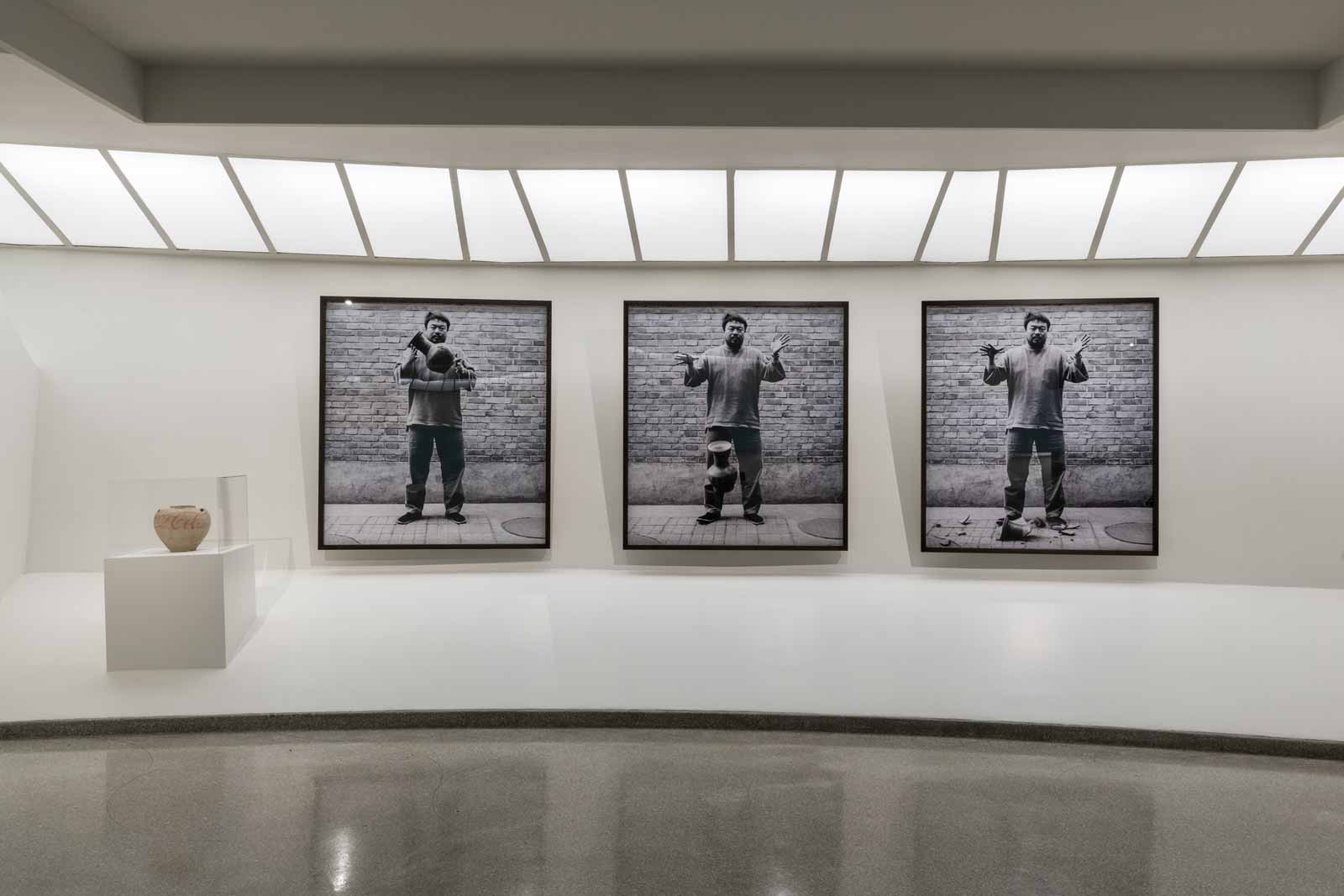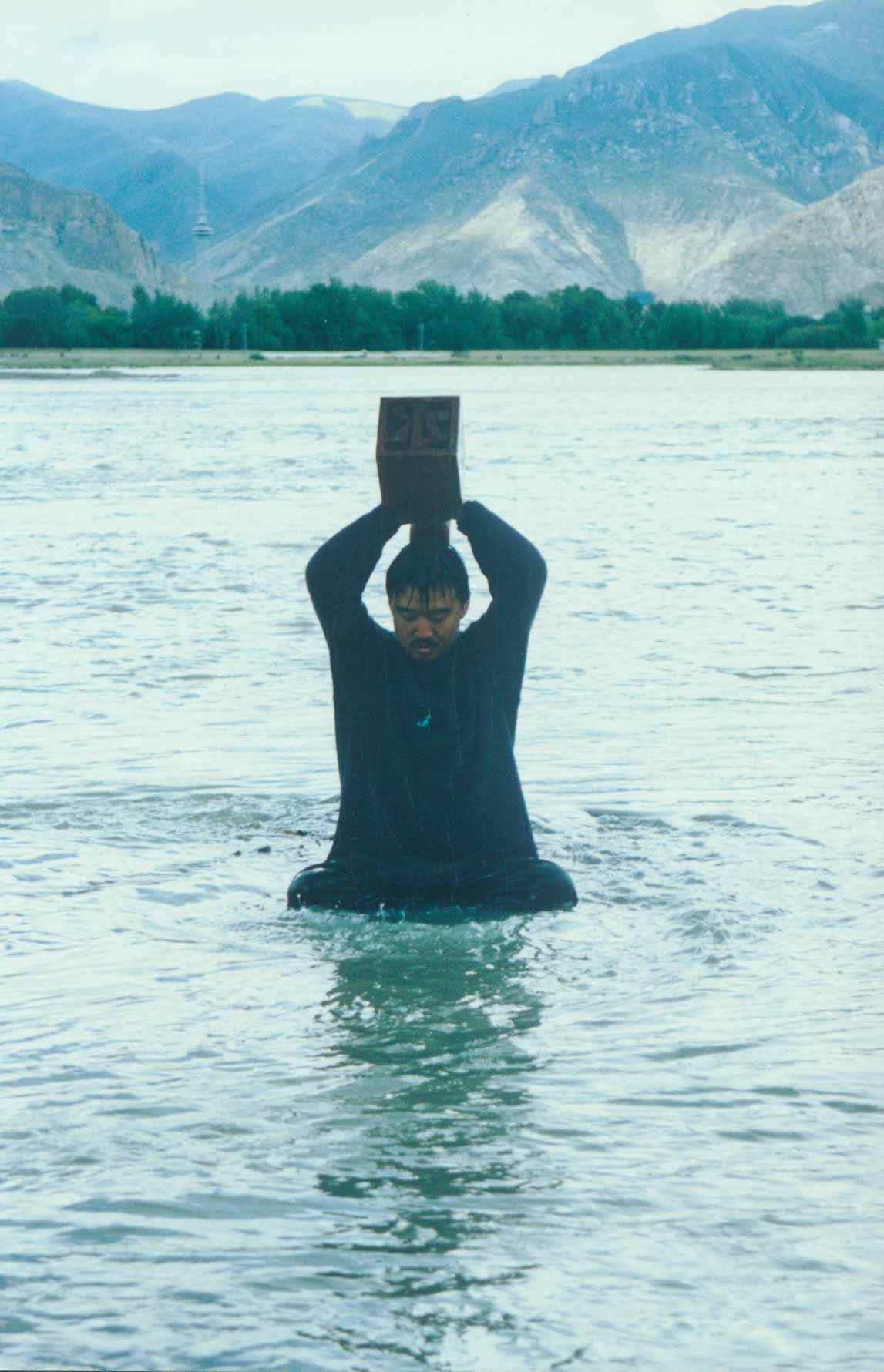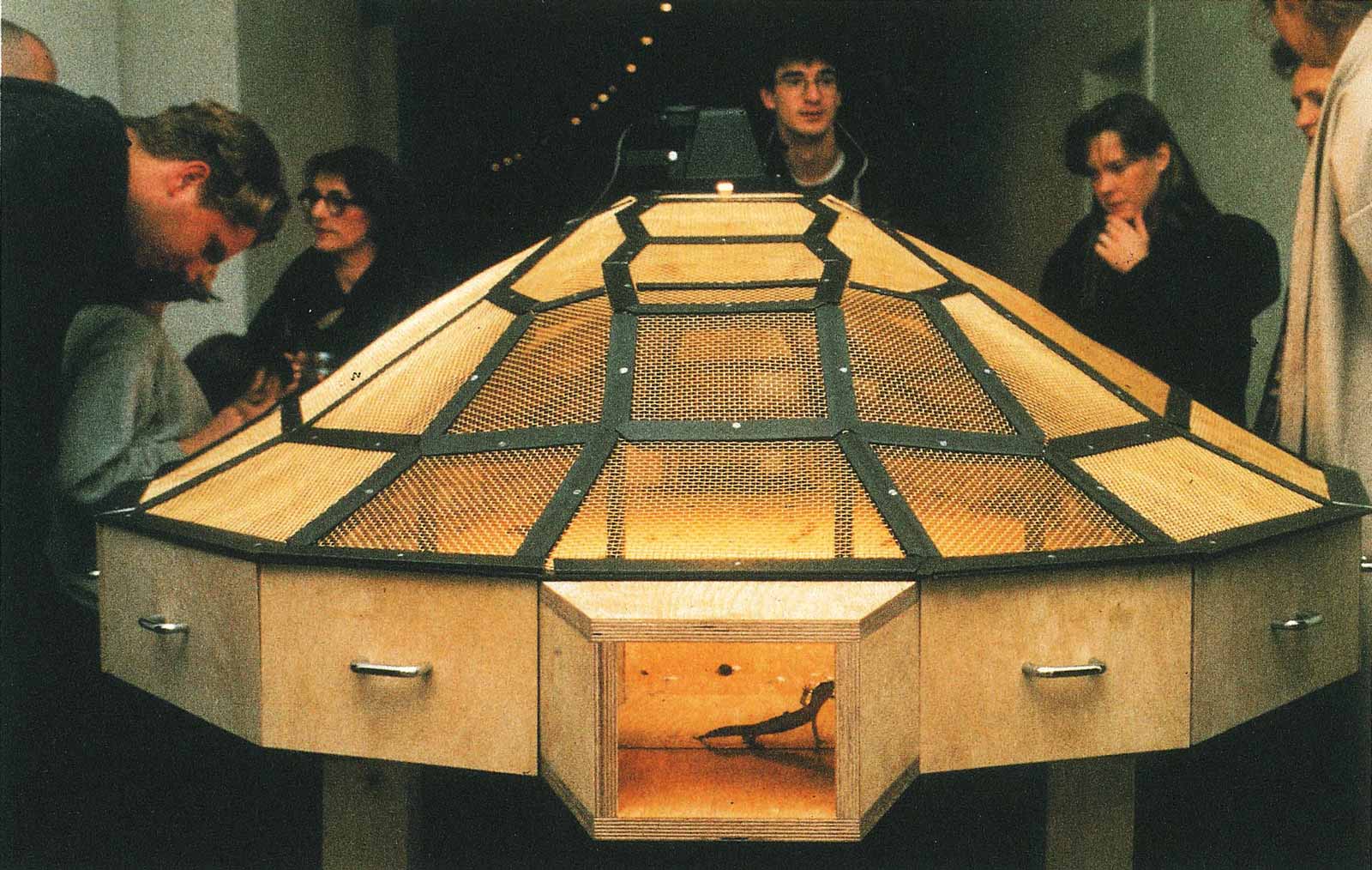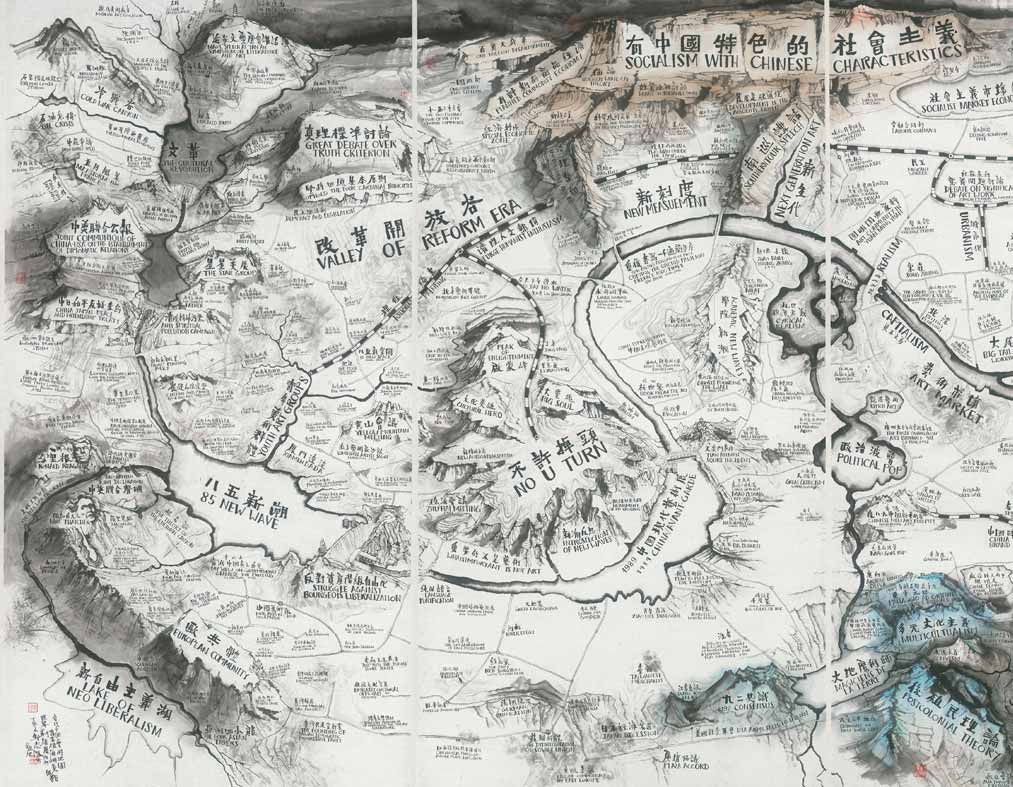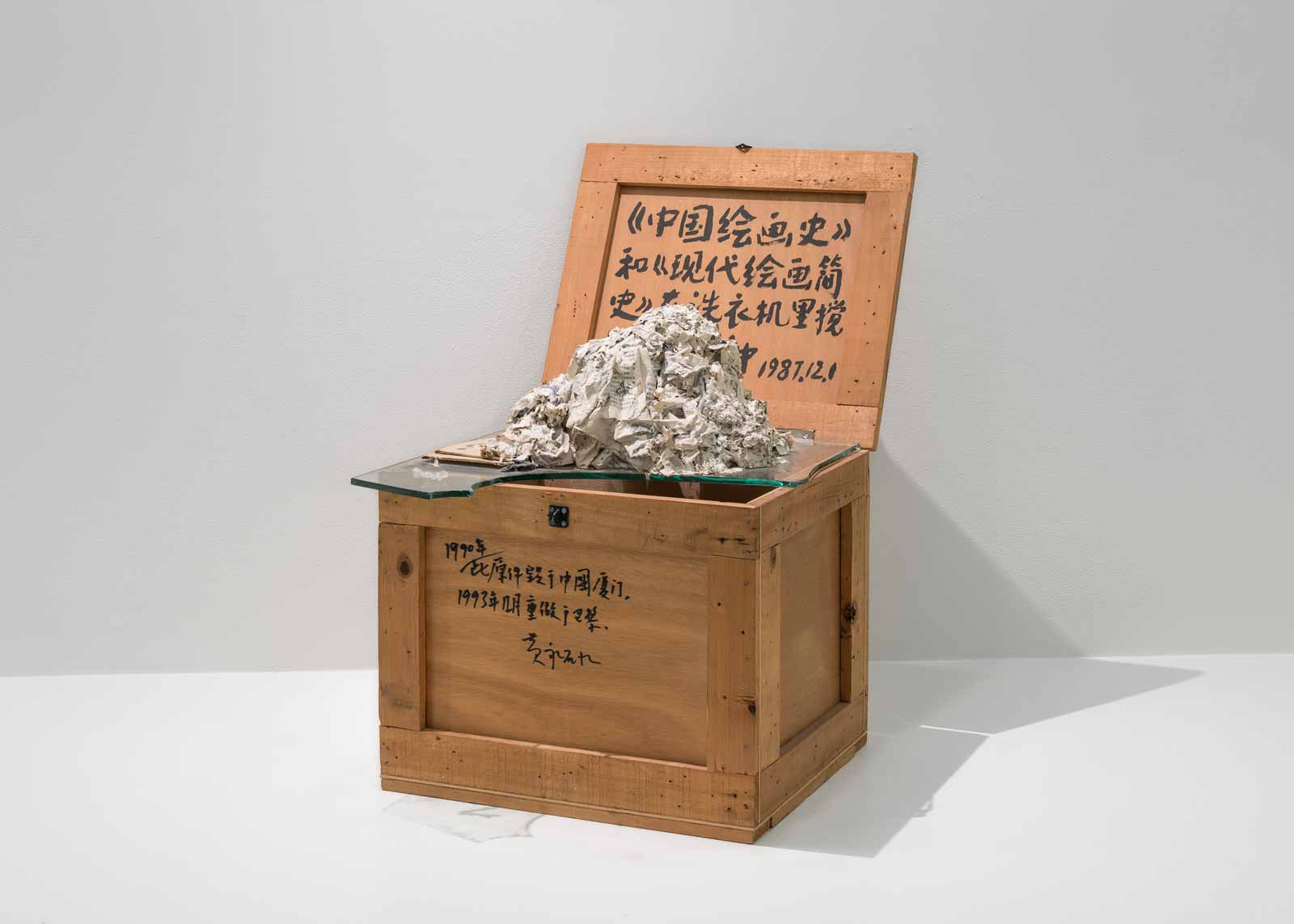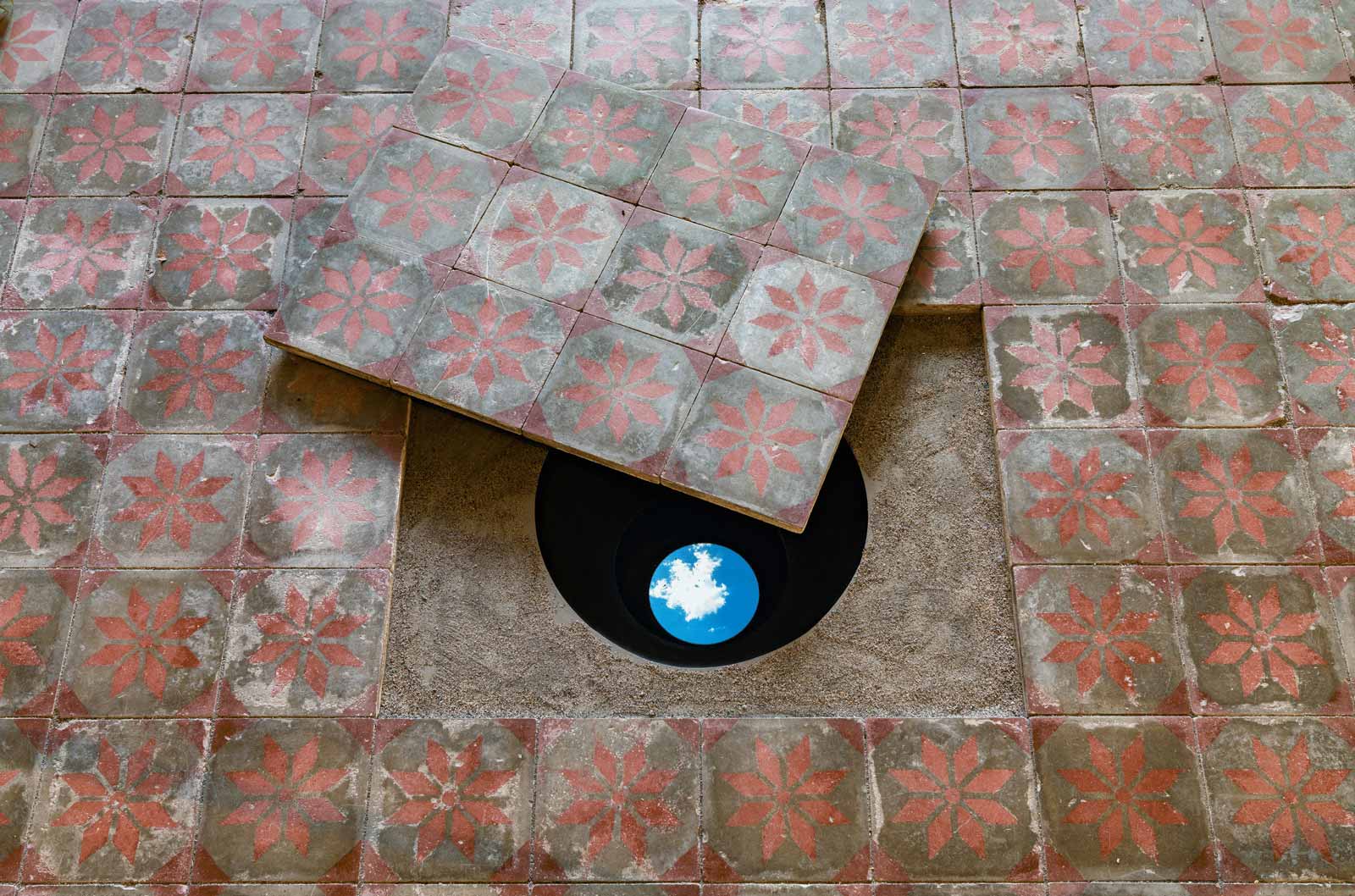On the evening of May 20, 1989, in response to weeks of mass demonstrations in Tiananmen Square, the Chinese government placed Beijing under martial law. The following morning, in Hong Kong, far to the south, Wen Wei Po, the main Communist-controlled newspaper in the British territory, published a glaring white space containing four large Chinese characters—tong xin ji shou, meaning “heartbreak”—instead of the usual front-page editorial.
The editor of the paper, Lee Tze Chung, was a famously loyal apparatchik who for decades had followed every twist and turn in the party line. But that day, in protest against the declaration of martial law in Beijing, he “opened a skylight” of blank space in his paper. In the purge that followed the violent suppression of protesters on June 4, Lee was dismissed from his post.
Skylights were commonplace during the Chinese Republic that lasted from 1912 to 1949. In-house censors working for the Nationalist Party at newspapers and publishing houses throughout the country deleted politically sensitive articles before they went into print. In 1933, the writer Lu Xun, a frequent target of the censors, said it was hardly surprising that Chinese writers lacked a backbone: “Once the editors have removed a few ribs here, and the censors have taken away a few more there, what’s left?” Blank spaces were a warning to writers and readers alike to comply with the party line. After the victory of the Communists in 1949, China’s skylights were closed. Some hoped that an era of openness had dawned, but in the new one-party state writers and editors soon learned the art of self-censorship, and that good news was the only news.
The events of 1989 and China-style skylights both feature in “Art and China after 1989: Theater of the World” at the Solomon R. Guggenheim Museum in New York. The exhibition takes 1989 as a pivotal moment not only for China’s politics, but also for its cultural scene. The fixation is justified. For nearly three decades, the Chinese authorities have exhorted people simply to “move on” from what they dub the “Tiananmen Incident.” Their reasoning is simple: the political stability vouchsafed by the military repression of opposition to the party and its program in 1989, and continued police action since, have given China its best chance since 1840 to realize a national dream of wealth and power. Opponents of this view still cleave to a long-frustrated tradition of modernization with democratization that dates back to the first days of the Republic in the early twentieth century.
After Tiananmen, artists, generally sensitive to the changing temper of society, were caught up in the “tidal wave of commercialism” of the 1990s. But as the cultural avant-garde experimented with an array of artistic motives and forms, the Chinese Communist Party also evolved. It learned to manage a globalizing economy and melded its dated Leninist political model with new technologies.
“Theater of the World” is an account of two important decades in that tortuous journey and it revisits the era of China’s global emergence from an academic and inclusive curatorial perspective. Crucially valuable is the effort made to redress an imbalance in the general international understanding of contemporary Chinese art, one which has previously over-emphasized what the art critic Jed Perl has called “radical chic with blood on its hands.” Regardless, the curators of “Theater,” partly under the influence of Wang Hui, an establishment “new Marxist” favored by left-leaning Western academics, follow the trend of earlier exhibitions to celebrate too readily vacuous critiques of capitalism, to unearth supposed acts of resistance in artistic gestures, and to extol experimental forays as rebellions in miniature.
On October 4, 2017, the Guggenheim was forced to open skylights on its own China show. An article in The New York Times by Jane Perlez, published two weeks before the exhibition opened, featured three works that used live animals. Public outrage and an online petition signed by hundreds of thousands of protesters demanded that the museum remove the offending works. Beyond the reasoned criticism of the exploitation of animals for mannered cultural thrills, there were overt threats of violence against the museum and its staff.
The Guggenheim shied away from a public defense of their artistic choices; after issuing boilerplate statements about respecting artistic freedom, they yielded to the online power of the crowd, and opted to open skylights, leaving three gaping holes in the exhibition. One of the evacuated works—Huang Yong Ping’s eponymous installation Theater of the World (1993)—was the show’s centerpiece. A turtle-shaped cage, Huang’s “theater” was designed to house live insects and reptiles that would slowly devour each other over the course of the exhibition (and be periodically replenished). When creating this piece Huang mused whether he had designed “an insect zoo? A test site where various species of the natural world devour one another?… A metaphor for the conflict among different peoples and cultures?”
Advertisement
The wall behind the cage features a multi-paneled map commissioned by the Guggenheim. The work of Qiu Zhijie, a prominent conceptual artist and a professor at a Chinese state institution, this map of the Chinese world offers an unruly topography, a landscape of concepts, themes, art movements, political slogans, and geopolitical buzz words. The exuberant mêlée is supposed to reflect cultural plurality and a country in disarray, yet Qiu unintentionally reveals the real mind map of contemporary China, one built on the bedrock of the Communist Party. It also hints at an uncomfortable reality: from the 1990s semi-official artists from China have benefited from the successes of the Communist Party’s economic program while enjoying the international cachet of “transgressive art,” that is, art that is naughty but not dangerous.
Ai Weiwei was a member of The Stars, a celebrated post-Mao art collective that pioneered unofficial exhibitions, who had moved to New York in the early 1980s. After he returned to Beijing in 1993, he viewed the Chinese art scene with a critical eye:
The investigation of all kinds of language, the deployment of a sparkling array of methodologies and media, the plagiarism of styles and content—none of these things can disguise the cultural deficit, a lack of self-awareness, social critique, and creative independence. Instead, artists celebrate their craven pragmatism and opportunism. They reflect degraded standards and a lack of heartfelt values.
The preface to “Theater of the World” is a small sculptural piece, also by Huang. Dating from 1987, it is a mound of pulp that the artist made by placing two art books—Wang Bomin’s 1982 The History of Chinese Painting and a 1979 translation of Herbert Read’s A Concise History of Modern Painting—in a washing machine for two minutes. It is presented as a Dadaist response to the dilemmas facing artists caught between tradition and modernity, the national and the global.
We are told that Huang “sought to liberate our languages, imaginations, and essentially our lives from the locked hegemonic systems of logic and value.” The same year that Huang pulped his art books, an English-language translation of Hungarian dissident Miklós Haraszti’s The Velvet Prison: Artists Under State Socialism appeared (a Chinese version was published in 2015). Haraszti’s book remains an essential guide to understanding the culture of the People’s Republic of China. He observes that:
[Dissidents] are nutrients, like broken blossoms in a garden.… We can utilize their aesthetic discoveries, just as we do the experiments of Western artists.… We can create “valuable” and “organic” innovations from their unacceptable conceits.… They make cultural politicians more sensitive and critics more clever.… The more talented and flexible the state, the more pleasurably it can suck the dissidents’ vital fluids into the organism of state culture.
“Theater of the World” is an illustration of Haraszti’s insights. In an illuminating catalogue essay, Philip Tinari, one of the curators, wonders:
Are we then… to deduce futility in the fact that the endgame of the art movement that began with these [party-led economic] reforms is a self-conception that has brought an entire scene not forward and out into the world but back into an official scheme that long predated it? Might we go so far as to see in 1989 and 2008, the dates that mark the range of our exhibition, specters of 1919 [May Fourth leading to the establishment of the Communist Party] and 1949 [the foundation of the People’s Republic of China], respectively?
If Huang’s machine-washed art history was a prelude to “Theater of the World,” what I regard as its “postscript” has been tucked away on the ground floor of the museum’s rotunda next to the entrance to the restaurant. By reconfiguring an installation made in Beijing in 1995, Wang Gongxin opens a skylight in the museum floor itself. The original, Sky of Brooklyn—Digging a Hole in Beijing, consisted of a 3.5-meter “well” dug in the living room floor of the artist’s Beijing house. A television monitor at the bottom of the well showed footage of the sky of Brooklyn in a continuous loop. Wang added a soundtrack: “What are you looking at? What’s there to look at? There are a few clouds in the sky. What’s there to see?”
Advertisement
The artist imported his old floor tiles for the Guggenheim show and replicated the well. This time the work was called Sky of Beijing—Digging a Hole in New York, and the television monitor offered an unbroken view of the sky over the Chinese capital. Sotto voce, small-scale, discreet, Wang’s work is a welcome relief after the cacophony and bristling ambition of much of the rest of the exhibition. Wang’s bottomless well invites the viewer to reflect on two clichés: one is the notion that if you were to dig a hole straight through the earth you would end up in China; the other comes from Zhuangzi, the third-century BCE Taoist thinker who said that you can’t discuss the vast ocean with a frog at the bottom of a well for he only sees what is over his head.
If, in 2017, Wang’s recreation of an old skylight at the Guggenheim reveals a new vista, it is of troubled skies both over Beijing and New York.
“Art and China after 1989: Theater of the World” is at the Guggenheim Museum through January 7, 2018. The accompanying book Art and China after 1989: Theater of the World, edited by Alexandra Munroe with Philip Tinari and Hou Hanru, is published by the Guggenheim.



